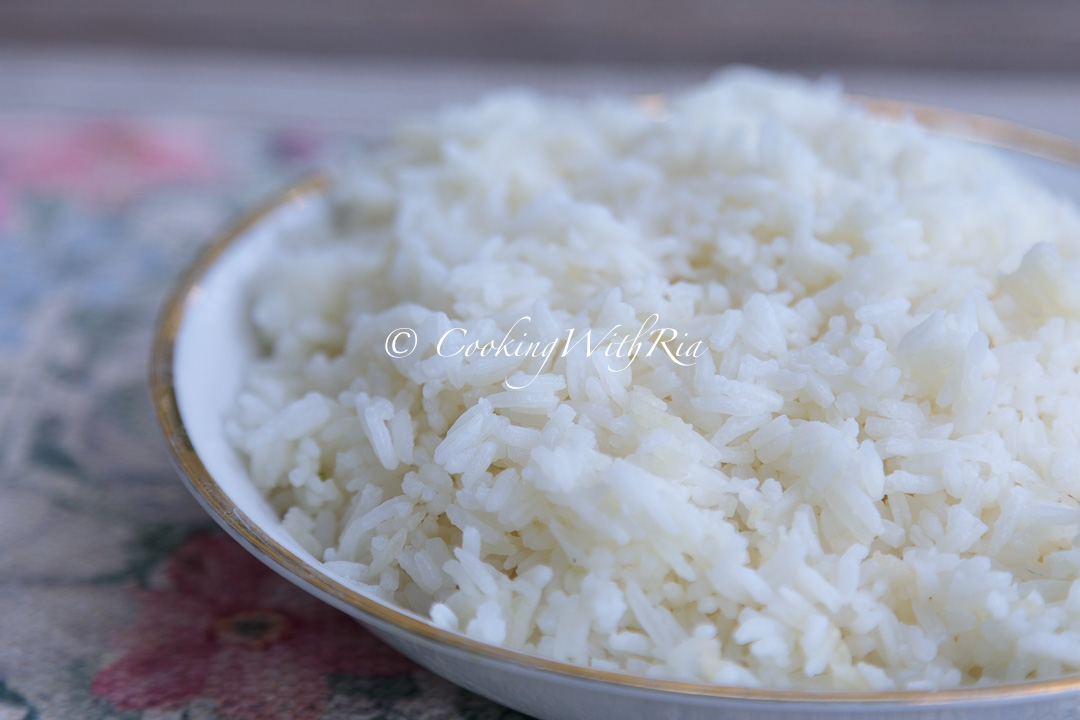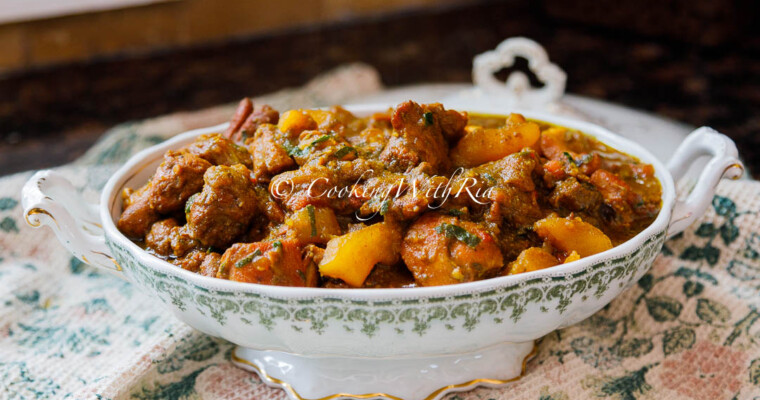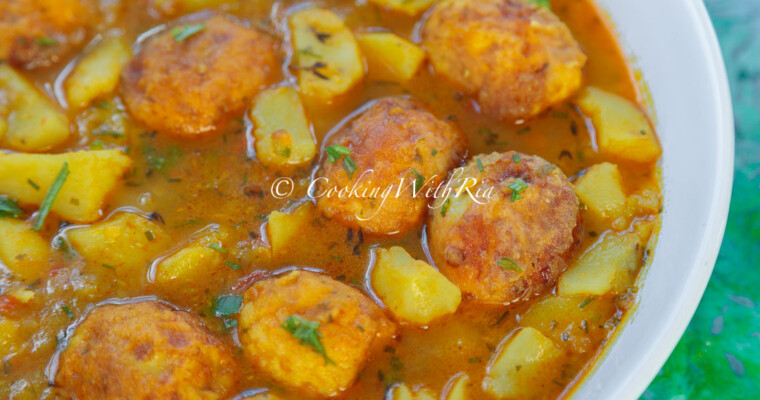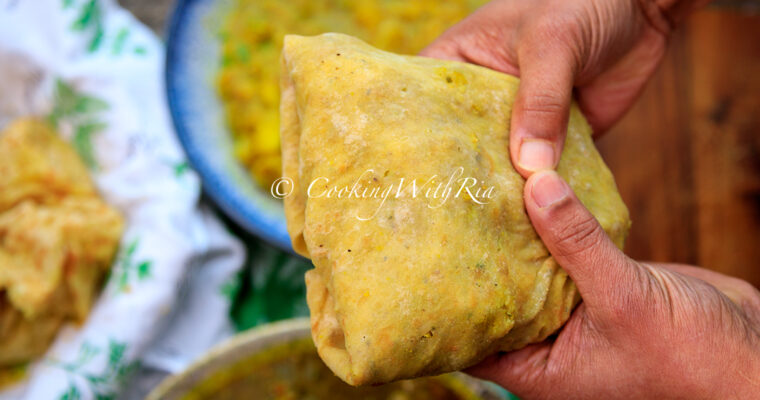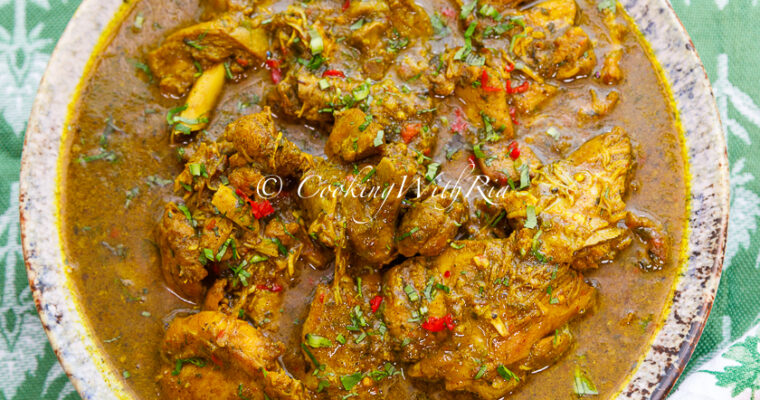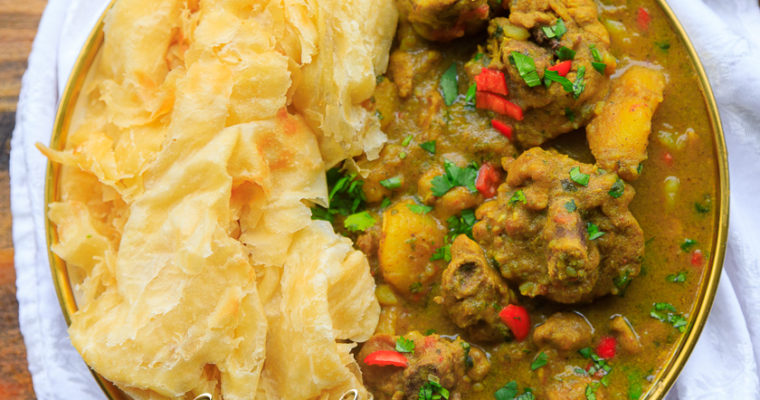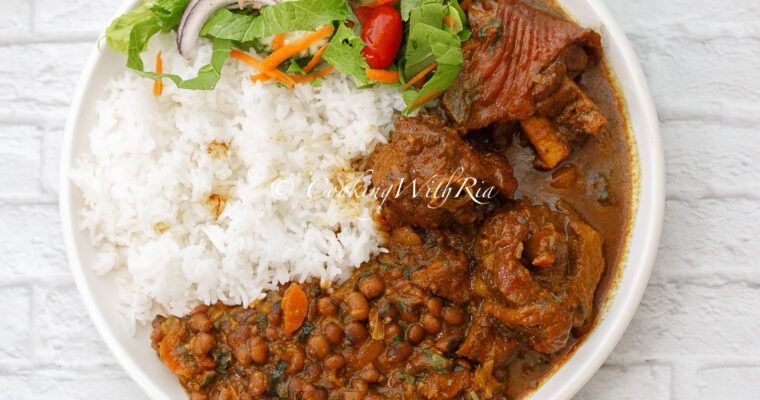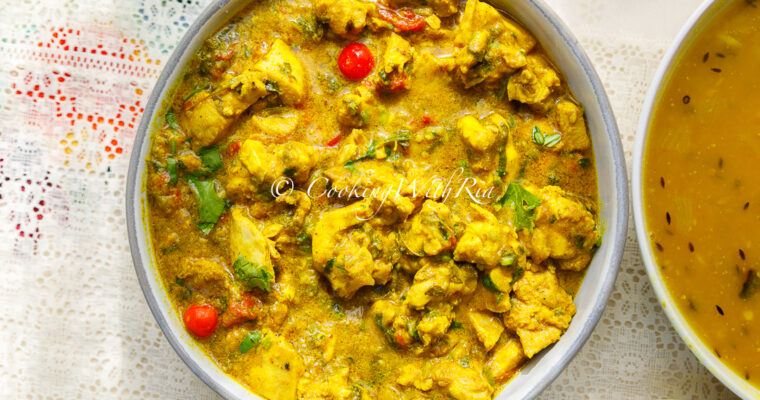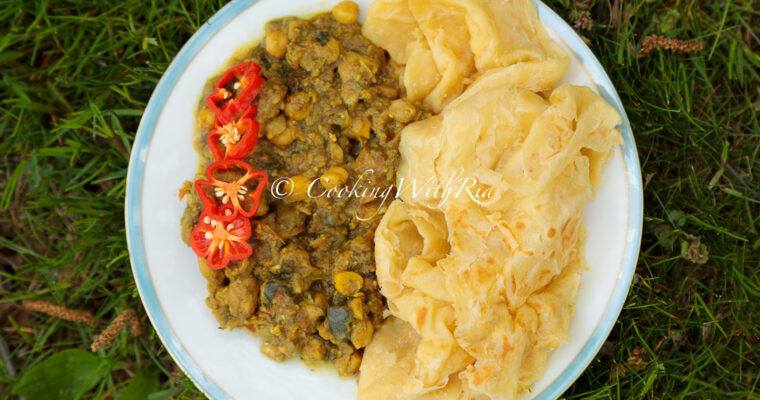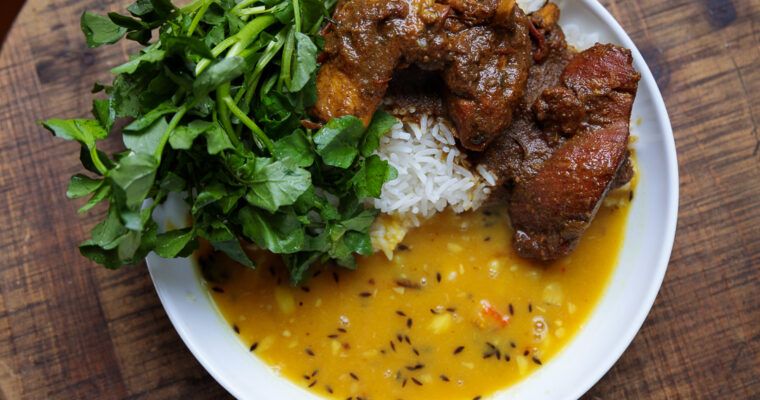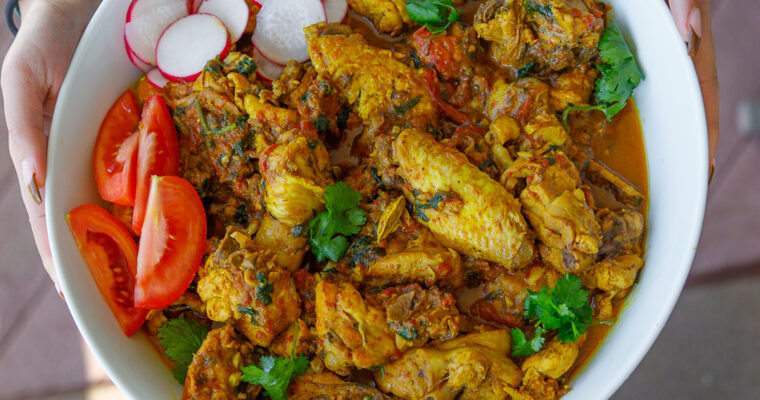Cooking white rice to perfection is a fundamental skill that enhances countless meals. Whether using the stovetop, rice cooker, or Instant Pot, this guide will walk you through the best methods to achieve fluffy, tender rice every time.
Table of Contents
The Importance of White Rice in Caribbean Households
White rice holds a special place in Caribbean cuisine and culture. It’s not just a side dish—it’s a staple that completes meals and brings families together. In many Caribbean households, rice is served almost daily, paired with stewed meats, curries, or legumes like dhal, pigeon peas or red beans.
- Tradition & Comfort: Whether it’s a Sunday meal with stewed chicken and callaloo or a weekday dish of rice and dhal, white rice is a comforting, familiar presence on the dinner table.
- Affordability & Accessibility: Rice is a budget-friendly, easy-to-store ingredient, making it an essential part of Caribbean kitchens.
- Versatility: It pairs effortlessly with the bold, flavorful sauces of Caribbean stews and curries, soaking up rich seasonings like garlic, thyme, and coconut milk.
- Cultural Celebrations: At festive and casual gatherings, rice is the base for dishes like pelau (a one-pot rice and meat dish) and cook-up rice, bringing communities together with shared flavors and traditions.
No matter the occasion, white rice remains a symbol of nourishment, tradition, and Caribbean hospitality.
Why You’ll Love This Recipe
- Versatile – White rice pairs with almost any dish, from curries to stir-fries.
- Easy to make – Simple methods with minimal ingredients.
- Perfect texture – Achieve fluffy, separate grains without stickiness.
Ingredients You Will Need
- White rice: Choose long-grain, medium-grain, or short-grain based on your preference.
- Water: The ratio depends on the cooking method.
- Salt (optional): Enhances flavor.
- Butter or oil (optional): Adds richness and prevents sticking.
Why Proper Rice Preparation Matters
White rice serves as a versatile foundation for countless dishes across various cuisines. Achieving the ideal texture and flavor can significantly enhance your meals. Properly cooked rice should be tender yet firm, with each grain distinct and separate.
Selecting the Right Rice
There are several varieties of white rice, each with unique characteristics:
- Long-Grain Rice: Known for its slender grains and fluffy texture when cooked.
- Medium-Grain Rice: Slightly shorter and more tender, often yielding a moist, slightly sticky consistency.
- Short-Grain Rice: Plump and starchy, resulting in a soft and sticky texture, commonly used in sushi and risotto.
For most everyday dishes, long-grain white rice is the preferred choice due to its light and fluffy nature.
Popular White Rice Brands in Caribbean Households
In Caribbean kitchens, white rice is a daily staple, and certain brands are preferred for their flavor, texture, and reliability. Here are some of the most popular choices:
- Madame Gougousse – A well-known brand in Caribbean and Haitian households, prized for its quality and consistency. Madame Gougousse Rice offers different types of rice, including white rice and parboiled rice. Check the packaging or product description to determine whether it is regular white rice or parboiled. Their product is essentially jasmine rice, a type of white rice.
- Carolina Rice – A long-grain rice that cooks up light and fluffy, perfect for everyday meals.
- Goya – A widely available brand, often used for classic dishes like rice and peas or pelau.
- Uncle Ben’s (Ben’s Original) – A popular rice that holds its texture well.
- Other brands: Mahatma Extra Long Grain Rice – Very popular on Amazon
These brands are staples in Caribbean households, ensuring the perfect rice to accompany our vast selection of flavorful dishes.
Is Parboiled Rice the Same as White Rice?
No, parboiled rice and white rice are not the same.
- Parboiled Rice: This type of rice is partially boiled in its husk before milling, which helps retain more nutrients from the bran. It has a firmer texture and a slightly yellowish color compared to white rice. It also takes a bit longer to cook but remains firmer when cooked. See how to cook parboiled rice here. I use this rice to make the perfect grainy rice for Trini fried rice.
- White Rice: White rice is fully milled and polished, removing the bran and germ, which results in a softer texture and shorter cooking time. However, it also loses many of its natural nutrients during processing.
If the label says “Long Grain White Rice”, then it is regular white rice. If it says “Parboiled Rice”, then it has undergone the parboiling process, making it firmer and more nutritious than traditional white rice.
Is Jasmine Rice Considered White Rice?
Yes, jasmine rice is a type of white rice, but not all white rice is jasmine rice.
Key Differences:
- Jasmine Rice: A long-grain variety with a naturally soft, slightly sticky texture and a fragrant, floral aroma. Commonly used in Thai and Southeast Asian cuisine.
- Regular White Rice: Can be short, medium, or long grain. It has a neutral flavor and is less aromatic than jasmine rice. It is also less sticky when cooked, depending on the variety.
If you’re looking for a more flavorful white rice, jasmine rice is a great option!
Rinsing: To Rinse or Not to Rinse?
Rinsing rice before cooking removes excess surface starch, which can cause the grains to clump together. While rinsing can lead to fluffier rice, it’s important to note that in the United States, rice is often fortified with vitamins and minerals that can be lost during rinsing. However, Caribbean folks will not skip rinsing the rice for any reason!
Water-to-Rice Ratio
The water-to-rice ratio is crucial for achieving the desired texture:
- Standard Ratio: A common guideline is 2 cups of water for every 1 cup of rice. This ratio is widely recommended and serves as a reliable starting point.
- Alternative Ratio: Some sources suggest a 1.5:1 water-to-rice ratio (1.5 cups of water per 1 cup of rice) for stovetop cooking, which can result in a firmer texture.
Adjust the ratio based on your preferred rice texture and the specific variety you’re using.
Boil and Drain Method of Cooking White Rice (Traditional but Risky)
Some Caribbean households still prefer the boil and drain method to cook white rice. This technique involves boiling the rice in a large pot of excess water and then draining it, similar to cooking pasta. While it is a personal preference, it comes with more risks and complexity compared to steaming or using a rice cooker.
How to Use the Boil and Drain Method
- Bring a large pot of water to a rolling boil (about 4-6 cups of water per cup of rice).
- Rinse the rice and add it to the boiling water.
- Cook uncovered for 12-15 minutes, stirring occasionally.
- Test for doneness by biting into a grain— it should be tender but not mushy.
- Drain the rice using a colander over the sink, being careful of the hot steam.
- Let it sit for 5 minutes, allowing excess moisture to escape. Fluff and serve.
Safety Considerations
While this method works, handling a pot of boiling water and draining it can be dangerous. The steam can cause serious burns, which I personally experienced before switching to a rice cooker. As I became more experienced in the kitchen, I started alternating between steaming rice in a pot and using a rice cooker, depending on my needs. If you’re new to cooking rice, I highly recommend the absorption method or rice cooker for a safer, easier approach.
Additional Tips for Perfect White Rice
- Use an appropriately sized pot – A medium saucepan or pot is ideal for cooking rice unless you are making a large amount. Using a pot that is too large may cause rapid evaporation of liquid, leading to burning and sticking. This not only wastes rice but also makes cleaning more difficult.
- Avoid Lifting the Lid: During cooking, resist the urge to lift the lid, as this releases steam and can disrupt the cooking process.
- Use a Kitchen Towel: After cooking, placing a clean kitchen towel under the lid can absorb excess moisture, preventing condensation from dripping back onto the rice and causing stickiness.
- Resting Period: Allowing the rice to rest after cooking ensures that any remaining moisture is evenly distributed, resulting in a consistent texture.
- Use broth instead of water and a tablespoon of butter or oil for more flavor.
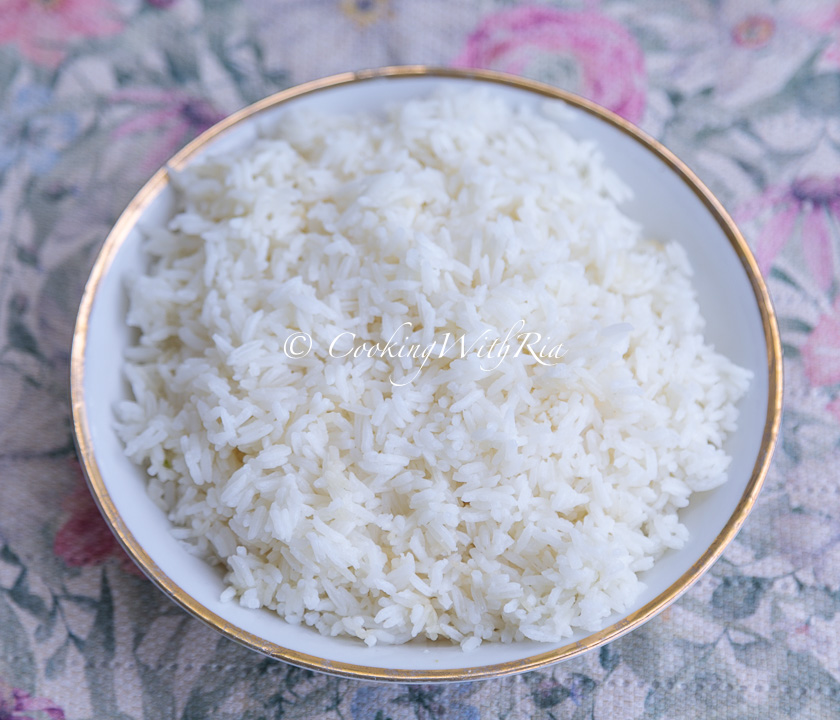
Troubleshooting Common Issues
- Rice Too Sticky: This may result from excess starch. Ensure you’re using the correct water-to-rice ratio and consider rinsing the rice before cooking.
- Rice Too Dry or Hard: This often indicates insufficient water or cooking time. Add a small amount of water and continue cooking on low heat until the desired texture is achieved.
- Burnt Bottom Layer: This can occur if the heat is too high or if the rice isn’t stirred before simmering. Ensure you’re cooking on low heat and that the rice is evenly distributed in the pot. Also using a non stick pot reduces the chance of burning.
Mastering the art of cooking white rice is a valuable skill that enhances a wide array of dishes. You can consistently prepare fluffy and delicious rice by understanding the nuances of rice varieties, water ratios, and cooking techniques. Remember, practice makes perfect, so don’t be discouraged by initial challenges. With time and experience, cooking perfect white rice will become second nature.
What to Eat with White Rice
White rice is a perfect base for many comforting and flavorful dishes, especially traditional Caribbean favorites. Here are some nostalgic combinations that have been loved for generations:
Rice with Ketchup – A nostalgic favorite for some, ketchup added to rice brings a touch of sweetness and tang, reminding many of their childhood.
Dhal, Rice, and Bhagi – A simple yet satisfying combination of dhal, rice, and steamed bhagi (spinach), creating a comforting, hearty meal.
Rice, Callaloo, and Stewed Chicken – A classic pairing of creamy callaloo with tender, flavorful stewed chicken for a wholesome dish.
Dhal, Rice, and Fried Fish – The rich flavors of dhal and the crispy, savory fried fish make this a beloved meal.
Rice and Curry Catfish – Spicy, aromatic curry catfish paired with rice for a truly flavorful meal.
Dhal, Rice, and Tomato Choka – A delicious combination of dhal, rice, and smoky tomato choka (roasted tomatoes with seasoning).
Rice, Stewed Red Beans, and Stewed Chicken – Stewed red beans compliment tender stewed chicken, all served over a bed of rice.
Rice and Curry Fish with Green Mango – A tangy and spicy combination of curry fish paired with green mango for a fresh, zesty contrast.
Dhal, Rice, and Curry Duck or Curry Chicken – For a heartier option, curry duck or chicken with dhal and rice is a true comfort food favorite.
Plain Rice with Butter – Sometimes, simple is best. A comforting bowl of plain rice with a bit of butter makes for a quick and satisfying side dish.
View the Results
Top Left: Instant Pot (Pressure Cooker)
For this batch, I used a 1:1.25 ratio of rice to water. The result was noticeably softer than the other methods, which is why I recommend using a 1:1 ratio in the final recipe below. That said, feel free to adjust based on your texture preference.
Bottom Left: Rice Cooker
This rice had a pleasant balance—soft, slightly grainy, and with a nice chew. Unfortunately, quite a bit of it stuck to the bottom of the pot, leading to some waste. That might just be an issue with my particular rice cooker, so don’t let it discourage you from trying this method. In terms of ease and convenience, it’s arguably the simplest way to cook white rice.
Bottom Right: Stovetop
This method produced the highest yield. The rice came out fluffy and slightly grainy with a great texture and flavor. Using the right size nonstick pot made a big difference here. Overall, the results were spot-on both in appearance and taste.
Final Thoughts
Each method has its strengths, and the “best” one really comes down to what works for you and your kitchen setup. Whether you’re short on time, looking for hands-off cooking, or prefer the traditional stovetop route, this post is here to guide you. Refer back to it anytime you’re cooking white rice, no matter the method. It’s all about knowing the right techniques to get consistent, perfectly cooked rice every time. Choose what’s most convenient for you—and cook with confidence.

Perfect White Rice Recipe
Ingredients
- 1 cup white rice
- 1 ½ – 2 cups water depending on the method
- ½ teaspoon salt optional
- 1 tablespoon butter or oil optional
Instructions
Stovetop Method
- Rinse the Rice (Optional): Rinse 1 cup of rice gently under cold water until the water runs clear to remove excess starch.
- Combine Water and Rice: Use 2 cups of water per 1 cup of rice in a medium saucepan. Add a pinch of salt and butter or oil, if desired.
- Bring to a Boil: Over medium-high heat, bring the water to a rolling boil. Boil for 5 minutes or until the rice grain appear on the top.
- Reduce Heat and Cover: Move the pot to your smallest burner, set the heat to low, cover with a tight-fitting lid, let it cook for 20 minutes until all the water is absorbed.
- Let it Rest: Remove from heat, do not open cover, and let the rice sit for 5-10 minutes.
- Fluff and Serve: Use a fork to separate the grains before serving.
Rice Cooker Method
- Rinse the Rice: Rinse 1 cup of rice gently under cold water until the water runs clear to remove excess starch.
- Combine Ingredients: Add 1 cup of rice and 1 1/2 cups of water to the rice cooker’s inner pot.
- Start Cooking: Close the lid and press the “Cook” or “White Rice” button.
- Rest and Fluff: Once the cooking cycle is complete, let the rice sit for 5-10 minutes before opening the lid. Fluff the rice with a fork and serve.
- Rice cookers simplify the process and often yield consistent results, making them a worthwhile investment for frequent rice consumers.
Instant Pot Method
- Rinse the Rice: Rinse 1 cup of rice gently under cold water until the water runs clear to remove excess starch.
- Add Ingredients: Use 1 cup of rice with 1 cup of water in the Instant Pot.
- Pressure Cook: Secure the lid, set the valve to “Sealing,” and select rice—usually automatically sets to 12 minutes.
- Release: Manually release any remaining pressure.
- Fluff and Serve.
Boil and Drain Method
- Bring a large pot of water to a rolling boil over high heat (about 4-5 cups of water per cup of rice).
- Rinse the rice and add it to the boiling water.
- Reduce heat to medium, cook uncovered for 12-15 minutes, stirring occasionally.
- Test for doneness by pressing between your fingers— it should be tender but not mushy or grainy.
- Drain the rice using a colander over the sink, being careful of the hot steam.
- Let it sit for 5 minutes, allowing excess moisture to escape. Fluff and serve.
Nutrition
Did You Love This Recipe? Leave a Rating and Comment!
If you found this guide helpful, please leave a 5-star rating and comment below! Your feedback helps others and encourages me to share more great recipes.
Questions or Concerns—Write Me!
If you have any questions, concerns, or suggestions about this recipe, feel free to comment below or email me at [email protected]. I’d love to hear from you and help make your cooking experience as enjoyable as possible. Happy cooking!

